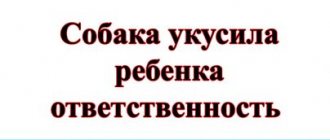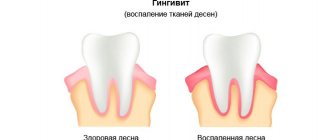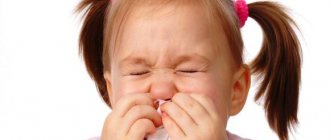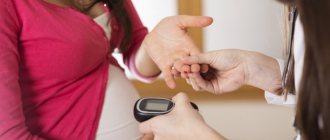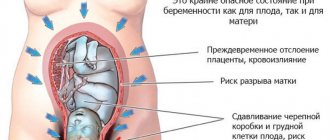Redness, swelling, and swelling of the skin appears from the injected poison immediately after an insect attack. Gradually, the symptoms disappear if you do not injure the affected area. But what to do if a child scratches a mosquito bite and gets infected? And not all adults can tolerate the itching and restrain themselves from injuring the affected area. As a result, the bite site swells even more, and it is possible that pathogenic bacteria can penetrate, causing an inflammatory process.
To reduce the risk of serious damage to the body, you need to know how to treat the consequences of bites and replenish your first aid kit with the necessary medications before the summer.
Treatment of scratching without severe allergies
Mosquito venom causes severe itching. To cope with it, a person begins to scratch the wound. It is especially difficult for a child to overcome such a desire. As a result, droplets of blood appear, a clear liquid. The bite site should be immediately rinsed with cold water and treated with one of the pharmaceutical preparations.
- Balm, pencil or patch “Golden Star”. The products contain petroleum jelly, paraffin, essential oils, eucalyptus, mint, cloves, and have no contraindications other than individual intolerance to the components. After application, the skin feels a slight tingling sensation, strong cooling, and the itching goes away immediately. Children and adults can treat the wound up to 4 times a day.
- Cream "Boro Plus". The composition of the drug includes aloe, sandalwood. They relieve itching and inflammation if a child scratches a mosquito bite until it becomes very red. Boro Plus is suitable for children of any age. It should be applied pointwise up to 4 times a day.
- Balm “Rescuer”. The product has a fatty consistency and has a regenerating, anti-inflammatory and antiseptic effect. It contains refined naftalan oil, sea buckthorn, lavender, tea and sandalwood oils, turpentine, beeswax, and vitamins. The balm should not be used together with other antiseptics (for example, iodine, hydrogen peroxide) to avoid an unwanted chemical reaction. For babies, you should purchase the “Children's Rescuer” balm. It can be used from birth.
- Balsamic liniment (according to Vishnevsky). The main component of the ointment is birch tar, which has a strong anti-inflammatory and antibactericidal effect. The drug can be used by children from an early age. Its negative indicator is a specific smell. In addition, traces of the ointment may remain on clothing and bedding.
If a child scratches a mosquito bite without causing an infection, the wound must be treated within 5 days. As the severity of symptoms decreases, the number of procedures is gradually reduced from 4 to 1 per day.
How to treat: tablets, ointments, gels to relieve itching, swelling, redness
Drug treatment of the affected area after a midge bite is as follows:
- Taking painkillers and allergy pills. You can use Nurofen, which will reduce unpleasant symptoms, relieving pain. In addition, the use of Suprastin, Fenistil, Claritin, Zodak and Cetrin is indicated. These antihistamines can reduce the symptoms of itching and burning and eliminate swelling. Their use is necessary in the first 3 days after the incident.
- Applying Sudocrem or Levomekol to the skin, which promote rapid healing and relieve inflammation. Repeat the procedure 2 times a day for 5 days.
- Use of glucocorticosteroids. A few hours after the bite, you can apply Hydrocortisone or Dexamethasone. Such compositions quickly relieve swelling in the area of localization of inflammation and eliminate allergy symptoms. It is also recommended to use such creams at least 2 times a day for 3 days.
Fans of folk remedies can use the following recipes:
- Wash and peel fresh potatoes. Grate the tuber and apply the resulting pulp to the affected area, leaving for 20 minutes. Then you can treat the bite with any antihistamine cream. You need to repeat the procedure every day until the inflammation decreases.
- Dilute 1:1 water and 6% vinegar. Apply lotions 2 times a day for 15 minutes, using gauze folded several times. The course of treatment is 3–4 days, depending on the nature of the edema.
- Add to 1 tbsp. l. vegetable oil 3 drops of mint essential oil. Moisten a cotton pad generously and apply to the affected area for 10 minutes. Repeat the procedure after 2 hours. This method is especially effective in the first 2 days.
Under no circumstances should you heat the bite area until it heals. And for the first 3-5 days, limit yourself to showers, avoiding hot baths. Under no circumstances should you scratch the bite site. If an infection occurs, the wound can become very swollen and fester.
Allergy with secondary infection
An ordinary mosquito bite can become a big problem if an inflammatory process begins. This will become clear when the affected area is swollen, the skin becomes very red, a lump appears and a rash appears around it. In this case, you cannot do without antibiotic therapy with a course of 5 days to 3 weeks.
Treatment must be carried out under the supervision of a doctor. The doctor usually prescribes medications for external treatment.
- Levomekol. The ointment inhibits the development of bacteria, has an immunomodulatory effect, and is suitable for infants. The ointment is applied to the tampon and secured with a bandage or bandage.
- Methyluracil. The drug is effective for purulent lesions and ulcers, eliminates inflammation well, and does not cause harm to healthy skin.
- Elokom-S. The drug contains an antibiotic, glucocorticosteroid, salicylic acid, immediately eliminates itching, effectively suppresses pathogenic bacteria, and disinfects the wound.
Prevention measures
Most often, insects attack in suburban areas, during outdoor recreation. When doing gardening work or preparing for a picnic, you may not immediately notice an insect attack on your baby, and he will try to eliminate the itch with dirty hands. As a result, scratching a mosquito bite will open the door to infection.
The best preventive measure against attacks is the use of repellents: patch, bracelet, drops, spray. In addition to special products, essential oils of mint, geranium, eucalyptus, lemongrass, and baby cream with vanilla work well. Prophylaxis can be used only twice a day; it lasts for 2 hours.
If, however, the insects succeed in attacking, timely treatment will save you from severe scratching of mosquito bites. First you need to rinse the wound with cold water, then disinfect it with one of the following products:
- medical alcohol;
- tincture of valerian, motherwort, propolis, calendula;
- 3% solution of hydrogen peroxide;
- tea tree oil;
- Menovazin solution.
Disinfector can be prepared from home remedies:
- Add a little water to baking soda to form a paste. It is applied to the bite site and left until dry. For a small child, the wound can be treated with a weak soda solution.
- Laundry soap is foamed and applied to the skin.
- Combine ¼ glass of water and 1 teaspoon of table vinegar, soak a cotton napkin in the solution and make a compress.
- Aloe juice is suitable for impregnating a gauze bandage. The plant can simply be crushed, wrapped in a bandage and applied to the bite site.
- Toothpaste and shaving foam are used as an antiseptic.
Before treatment, you must be sure that the victim is not allergic to the components of the intended treatment.
It is easier to prevent mosquito scratching than to treat the wound later. If it is not possible to use a first aid kit or home remedies, their task is performed by medicinal plants: celandine juice, dandelion, plantain leaf. Regular saliva is a good antiseptic.
Source: VseProZud.ru
If a midge is caught by surprise, what to apply to the wound, what plants can be applied
If you are in the forest or in the country, then you may not have the necessary means at hand to help cope with the consequences of midge bites. If trouble takes you by surprise, far from pharmacies, do the following:
- rinse the bite sites with any available clean fresh water - from a spring, river, drinking from a bottle is best;
- treat bites with vodka or vodka solution;
- Apply a thin layer of any cooling menthol-based ointment or mint toothpaste to the affected area, avoiding open wounds;
- You can use useful plants that you find nearby: dandelion, plantain, parsley, white cabbage. Wash the leaves, grind them into a pulp to form juice, apply to the bite site, securing with a bandage; Dandelions growing everywhere will help relieve inflammation
- Cut the onion head in half and apply it to the problem area.
What it is?
In medical practice, a mosquito bite that leads to the development of an allergic reaction is called culicidosis. Around the place where the insect stung, swelling and redness appear, the color of the epithelium changes, and a rash appears.
Mosquito allergies manifest themselves in different ways. There are several stages of the pathological process. There are two types of reactions:
- Organic local reaction. At the site of the bite, redness up to 5 cm in diameter and swelling of soft tissues are observed. These signs are accompanied by burning and itching; if you get an infection, the affected area becomes suppurated, nausea, weakness appear, and the temperature increases;
- A pronounced local reaction is characterized by redness over 5 cm in diameter and tissue swelling. Hyperemia and swelling can increase several days after the incident and persist for up to a week and a half. Additional symptoms: weakness, nausea, loss of appetite.
The main reason for an allergic reaction lies in the fact that the immune system does not produce antibodies that resist the insect's venom and saliva.
For your information, children under 3 years of age react most acutely to insect bites, due to an inferior immune system.
There are several reasons for the development of allergies:
- Hereditary predisposition. If there is a family history of allergies to pests, then information in the genetic code can be passed on to the baby.
- Failure of the immune system. It is impossible to predict the reaction. Allergies develop even in those children who do not have a tendency to such manifestations.
- The child's body is particularly sensitive to bites. In this case, the reaction is aggravated by preconditions - sleep disturbance, poor diet, general fatigue, etc.
The danger of bites lies not only in the development of allergies, but also in diseases transmitted by insects: mosquitoes - potential sources of yellow fever, flies - dysentery and typhoid, etc.
Why shouldn't you scratch the bite area?
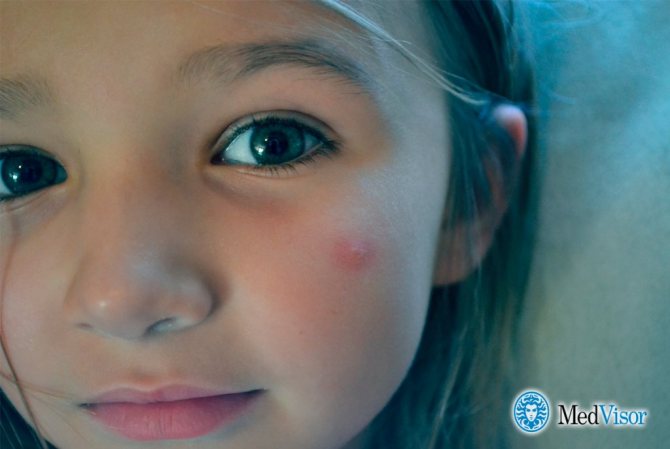
A mosquito bite in itself does not pose a particular threat to the health of the baby. The exception is infants - they can develop a severe allergic reaction to the anticoagulant proteins that the female mosquito injects under the skin while sucking blood.
These proteins cause our body to produce histamine, which is a mediator of immediate allergic reactions.
When foreign bodies enter, it is instantly released and provokes local or systemic inflammation. This is how our body reacts to the invasion of an infectious agent or foreign substance. Hence the reaction in the form of severe itching and slight swelling at the site of the bite
It cannot be scratched for two reasons:
- You irritate the skin more, causing more histamine to be released. As a result, you end up in a cycle of endless itching that will only get worse;
- You risk damaging your skin and causing a secondary infection.
When in the country or outside the city, be sure to explain to your child that under no circumstances should you scratch the bite site. The same goes for nettle burns.
First aid
Knowing what to do after a mosquito bite can prevent the development of swelling. To avoid such undesirable consequences, you need to carry out several procedures:
- We wash the affected area with cold soapy water.
- Apply an ice compress for a quarter of an hour. To do this, simply take ice, wrap it in gauze and apply it to the bite site. Such manipulations will help remove dirt from the skin and prevent the development of the inflammatory process.
- The next step is treatment with an antiseptic. You can use plant juices, antiseptics, prepared according to a folk recipe (we'll talk about them later).
Such events are held twice a day. If a mosquito has bitten a child, then you need to explain to him that scratching the wound is extremely undesirable, since this can lead to infection and long treatment.
Treatment
Treatment for mosquito bites at home is symptomatic. If the body's reaction is moderate, a small bump of reddened skin does not require treatment. However, children are often allergic to the bite, so a course of therapy will be required. In order not to harm the child, drugs should be used according to the age-specific dosage. When treating with folk remedies, it is also worth remembering that some recipes are intended for adults, and their use can cause an allergic reaction in an infant.
Other recommendations:
- for multiple bites, give allergy syrup (tablets);
- apply gel, balm or ointment to the skin, any remedy for mosquito bites for children to relieve itching and redness;
- Let the dekas drink more: it is important to remove toxins from the body. Boiled water or mineral water without gas will do. Be careful with herbal decoctions: some increase allergic reactions;
- Put on your child light clothes made of natural fabrics with long sleeves. Synthetic items are not suitable: irritation and allergy symptoms often intensify upon contact with material that does not allow air to pass through;
- Explain to older children that bites should not be scratched, otherwise the wounds will become infected;
- After applying the medicinal gel or ointment, monitor how the body reacts. If after a few hours the size of the red spots does not decrease, the symptoms intensify, urgently take the child to the hospital;
- if you don’t have a gel or balm against mosquito bites at home, use folk remedies, and then be sure to go to the pharmacy for medicine;
- If there are pronounced signs of an allergy, call an ambulance, especially in the case of small children.
If Quincke's edema develops, strange, suspicious spots all over the body, or severe shortness of breath, you should immediately call an ambulance. Before the medical team arrives, it is important to provide first aid to the injured baby. Recommendations on how to act in cases of severe allergies in children are given above.
Medicines
Insect bites should be treated in two ways: relieve general symptoms with oral antihistamines and act directly on the affected area. Antiallergic drugs are given for several days until the little patient’s condition improves. Children under one year of age are prescribed Fenistil, Zodak, Zyrtek, Suprastin. Medicines for adults should not be given to avoid worsening the condition.
You should also lubricate the bite sites regularly until complete recovery and swelling are relieved. For local exposure the following agents are used:
- Fenistil gel – relieves itching, reduces hyperemia. The drug contains antiallergic and anti-inflammatory components.
- Psilo balm is an antihistamine for external use with anti-inflammatory and anesthetic properties.
- Spray balm Moskitol - for quick effect.
- Balm Rescuer – relieves pain, reduces swelling and itching.
- Sudocrem is a zinc-based drug. Relieves irritation and gets rid of blisters in a short time.
For serious inflammatory processes accompanied by significant swelling, glucocorticoid-based agents are indicated. Such drugs quickly penetrate through the superficial stratum corneum of the skin into the epidermis and suppress inflammatory processes. They can be used no more than once a day, unless the doctor has prescribed an individual dosage:
- Advantan cream 1%. The drug can be applied from 6 months.
- Hydrocorizone ointment - used from 2 years.
A child scratched a mosquito bite to a wound
To procreate, female mosquitoes require protein, which is found in the blood of animals and humans. In this case, one bite is enough for her, after which she lays eggs and dies. Mosquito bites in children are more common than in adults - this is explained by the fact that midges prefer areas of the body with delicate skin and capillaries close to it.
Mosquitoes do not contain poisons, so poisoning as a result of their bite is excluded. Components of the insect's saliva cause swelling, redness and itching of the skin at the site of the proboscis puncture. A mosquito bite in a child is aggravated by frequent scratching, as a result of which mosquito saliva spreads into the surrounding tissues.
Single bites in children, as a rule, are not so dangerous. Children, especially infants, do not tolerate them well due to unbearable itching, and they may develop an allergic reaction, which is extremely dangerous at this age.
When eliminating symptoms of blood-sucking insect bites in infants, it is necessary to take into account that many medications are prohibited for use at this age. To alleviate the condition of newborns, you can use Fenistil gel, Psilo-balm or homeopathic ointment Iricar.
Folk remedies that are suitable for infants:
- applying a cut aloe leaf to the affected area of the skin;
- rinsing the wound with cool, salted water;
- treating the wound with brilliant green;
- applications with chopped parsley.
To avoid unwanted consequences, you should consult your pediatrician before using any product. To prevent your baby from scratching the itchy areas of the skin, he needs to cut his nails short.
The mosquito is not a harmless insect, as it is a carrier of dangerous diseases. There are known cases of infection with malaria, meningitis, Japanese encephalitis, and yellow fever through the bite of this flying bloodsucker. However, most often mosquito bites in children cause itching and redness of the skin. The baby scratches the itchy area, infecting it, which causes further suppuration.
Sometimes a mother who sees her child’s skin bitten by mosquitoes in the morning suspects a childhood infectious disease accompanied by a rash. Some bites resemble the symptoms of chickenpox - during the process of scratching, the nodule is injured and covered with a dried crust of blood. You can distinguish marks left by mosquitoes from infectious rashes by the following signs:
- bites usually appear on open areas of the body where it is easier for a mosquito to reach - legs, arms, head, ear, etc.;
- the baby’s general well-being does not change - he behaves as usual;
- a pink or red spot appears around the convex point, which can be quite large (see photo);
- the child may periodically scratch the affected areas, or may not notice them;
- Often bites do not go away for long; they can bother you for 2 to 14 days.
Allergic reaction to a mosquito bite, manifested by swelling of the eye
Sometimes the baby becomes red and inflamed not only at the bite site, but also at the skin around it.
In the case of an allergic reaction, inflammation of the skin increases, and after a couple of days the affected area doubles in size.
The photo shows that the epicenter is a small point (1-2 mm in diameter), rising above the surrounding tissues, which looks like a tubercle. Hyperemia of the skin covers a large area.
Redness of the skin at the site of the bite is not the only possible reaction of the child’s body. Sometimes nearby tissues swell, causing a thickening that can spread to an area of skin the size of an adult's palm. Such consequences are usually caused by an allergy to insect saliva, which contains a number of substances - coagulants, digestive enzymes, microorganisms.
However, most of all, the baby’s skin suffers from histamine. This is a substance that provokes tissue inflammation to facilitate the work of immune cells. At the site where histamine enters, the capillaries dilate, which leads to a slowdown in blood flow and increased vascular permeability. Macrophages and lymphocytes are able to freely attack enemy organisms.
Severe itching
The mosquito bite area usually itches even in an adult.
Histamine, as one of the components of a foreign protein, causes not only inflammation, but also itching, which is stronger in a child than in an adult due to the fact that the baby’s skin is thinner.
In addition, the wound becomes inflamed if microorganisms enter it, which also cause itching. When scratching the bitten area, the skin is injured, which can lead to infection of the sore.
Other signs
Apart from redness, swelling and itching at the site of the mosquito bite, there are usually no other symptoms. Sometimes the inflamed area hurts when pressed. If the itching and pain are quite severe, this may cause sleep disturbance. In addition, an allergy often occurs to an insect bite, which is manifested not only by redness of the skin. Possible urticaria, suffocation, anaphylactic shock.
Treatment for mosquito bites is symptomatic. If the body's reaction is moderate, a small bump of reddened skin does not require treatment. However, children are often allergic to the bite, so a course of therapy will be required. In order not to harm the child, drugs should be used according to the age-specific dosage.
Insect bites should be treated in two ways: relieve general symptoms with oral antihistamines and act directly on the affected area.
Antiallergic drugs are given for several days until the little patient’s condition improves. Children under one year of age are prescribed Fenistil, Zodak, Zyrtek, Suprastin.
Medicines for adults should not be given to avoid worsening the condition.
You should also lubricate the bite sites regularly until complete recovery. For local exposure the following agents are used:
- Fenistil gel – relieves itching, reduces hyperemia. The drug contains antiallergic and anti-inflammatory components.
- Psilo balm is an antihistamine for external use with anti-inflammatory and anesthetic properties.
- Spray balm Moskitol - for quick effect.
- Balm Rescuer – relieves pain, reduces swelling and itching.
- Sudocrem is a zinc-based drug. Relieves irritation and gets rid of blisters in a short time.
For serious inflammatory processes accompanied by significant swelling, glucocorticoid-based agents are indicated. Such drugs quickly penetrate through the superficial stratum corneum of the skin into the epidermis and suppress inflammatory processes. They can be used no more than once a day, unless the doctor has prescribed an individual dosage:
- Advantan cream 1%. The drug can be applied from 6 months.
- Hydrocorizone ointment - used from 2 years.
Folk remedies
Plantain leaf relieves itching and burning from insect bites
If a mosquito has bitten a child away from home and you need to relieve the itching in the field, you can use folk recipes. Among the most popular:
- Apply a washed plantain leaf to the affected area, secure and leave for half an hour. After this, you can glue a new sheet.
- Mint leaves will cool skin that is red and itchy.
- Toothpaste relieves itching well, preferably mint. You need to anoint the bite with it, wait for the product to dry and rinse off.
- You can use Zvezdochka balm against itching - lubricate the bite areas every two hours.
- Place a couple of drops of aloe juice on the inflamed tubercle.
- 1 tsp. Dilute soda with water to a paste. Apply to skin and rinse after drying.
First aid for insect bites
Most often, a mother discovers that her son or daughter has been bitten by mosquitoes only in the morning. At first, the bite sites are not very noticeable, then the symptoms increase - hyperemia of the skin around the epicenter appears, swelling and itching occur.
If the body reacts like this, you should act immediately, without waiting for the problem to worsen:
- If the affected area is swollen and a lump appears, you can apply ice wrapped in a handkerchief or towel.
- After this, it is necessary to give the baby an antihistamine in an age-appropriate dosage.
- Bite areas should be lubricated with a soda solution or external antihistamine (Fenistil gel). This will reduce itching and prevent scratching of the wound.
- It happens that a child manages to scratch the skin and injures it. Then the sore should be lubricated with an antiseptic (brilliant or Fukortsin).
If your baby has been bitten by a mosquito and the bite site is swollen, red and itchy, you need to relieve these symptoms as quickly as possible. Since there is a possibility that the midges have caused an infection, it is necessary to exclude any impact on the affected area: it should not be touched, combed, or picked. In order to disinfect the bite site, you should carefully wash it with regular soap.
Cold compresses will help relieve minor swelling, redness and itching. You can apply a piece of ice wrapped in a cloth or any other cold object to the affected area for a few minutes. If the area of the tumor has greatly increased, the area of skin where the baby was bitten by an insect becomes inflamed and turns bright red, we may be talking about an allergic reaction.
In this case, you need to give the baby an antiallergic drug and treat the bite site with Fenistil or Fukortsin. If, after a mosquito bite, the baby begins to experience shortness of breath, vomiting, or a rash appears on the skin, you must immediately call an ambulance. In the photo you can see what an inflamed mosquito bite on a child’s leg looks like.
Medications
When the skin at the site of a mosquito bite becomes very swollen and red, causing the baby a lot of pain, these symptoms should be eliminated as soon as possible.
It is best to use effective medications. However, this should be done only after carefully studying the instructions for use.
Otherwise, you can harm the child, provoking the development of unwanted reactions.
You can eliminate the painful symptoms caused by a mosquito bite using folk remedies:
- Onion juice. A piece of sterile cotton wool soaked in the juice of this vegetable should be used to wipe the affected area as often as possible. You can also apply an onion cut in half or a clove of garlic to the itchy area of skin.
- Applications with toothpaste. Applying mint toothpaste to the bite area effectively relieves itching. This procedure is contraindicated if the baby has severely scratched the bite site.
- Aloe juice. A well-washed succulent leaf of the plant is passed through a juicer, a cotton pad is moistened in the strained solution and applied to the bite site for 10-15 minutes.
- Applications with soda. Soda is mixed with warm water until it becomes pasty, then the resulting mass is applied to the affected area for 15-20 minutes.
- Wipe with vinegar. A piece of sterile cotton wool should be soaked in 3% vinegar and applied several times a day to the bite site.
- Compresses with laundry soap. A piece of clean cloth should be generously soaped and applied to the affected area of the skin.
Despite the fact that the listed products are based on the use of natural ingredients, before using them you must make sure that your baby does not have allergies.
What to do if a child scratches the bite down to the wound and gets infected?
However, while adults are able to control themselves and not scratch the bite, it is more difficult for children to do this. A baby who has introduced an infection into the wound will soon feel unwell, and a purulent abscess often appears in the inflammatory focus. In this case, consultation with a specialist is necessary, since the treatment of such phenomena in children is more complex. As a rule, the doctor prescribes:
- An ointment based on antibiotics, to which microorganisms such as streptococcus are sensitive (Levomekol, Levomycin, Syntomycin). The use of such drugs in infants is possible only after consultation with a doctor.
- Sometimes the doctor recommends making applications with Vishnevsky ointment, which draws out pus well.
- In difficult cases, an antibiotic is also prescribed for oral administration.
Source: https://komp-off.ru/rebenok-raschesal-ukus-komara-ranki/
Folk remedies
The most common skin reactions to mosquito bites are itching, redness and swelling. Therefore, most traditional methods are aimed at eliminating precisely these symptoms. The first thing to do after a mosquito bite is to wash and disinfect the wound. For infants, use regular boiled water at room temperature; for older children, use water with a small amount of soap. If there are a lot of bites, you can make a local bath with the addition of 1-2 pinches of sea salt, 1-2 teaspoons of mint tincture or the same amount of apple cider vinegar.
To alleviate suffering and reduce itching, traditional healers recommend the following remedies:
- Baking soda in the form of a solution or slurry. For the solution, take 1 teaspoon of soda in half a glass of cold water. For gruel - the same amount of powder mixed with a few drops of water to form a paste. The solution is used to make lotions or wipe bites. The gruel is applied to the wounds in a thin layer, and after drying, wiped off with damp gauze or simply washed off with water. Considering that the external use of soda is safe, this method is suitable for children of any age.
- Toothpaste. A small amount of toothpaste with mint, menthol or eucalyptus is applied to the bite site using a cotton swab. After drying, the paste can be removed with a piece of cotton wool moistened with water at room temperature, and then repeat the steps.
- Apple vinegar. The product should only be used in cases where the wounds are not combed! A small ball of cotton wool is moistened with a drop of vinegar, after which it is applied to the bite site and, if necessary, secured to the skin with a piece of adhesive tape. After 15–20 minutes, the procedure can be repeated.
- Plants: plantain, mint, aloe vera, parsley. The leaves need to be kneaded with your hands, then the released juice should be used to lubricate mosquito bites.
- Kefir or yogurt. The wound treated with these products itches much less. Lubricating the bite site with a dairy product can be repeated many times until the condition is alleviated or the itching and redness completely disappears.
- Ice. A piece of ice wrapped in several layers of clean, dry cloth reduces the development of edema and relieves pain. The minimum time for applying cold to the affected area is 10 minutes, the maximum is 1 hour. In case of extensive skin lesions, ice should be kept for 10 minutes at intervals of 10-15 minutes. This way the inflamed area will not be overcooled more than required.
- Essential oils (lavender, tea tree, eucalyptus, chamomile, basil and others). As first aid, only tea tree oil can be applied undiluted to the bite site, in an amount of 1-2 drops. Before using on the skin, other oils must be diluted according to the instructions! Repeat this action every hour or as needed. For severe inflammation, it is recommended to use a paste consisting of 1 teaspoon of baking soda and 1 drop of lavender oil. These ingredients should be mixed in a small container and diluted with a small amount of distilled water to a paste-like consistency. The resulting product is applied to the bite site using a cotton pad until the discomfort decreases. Aromatic oils can be used on children from birth, however, before you start treating the wound, make sure that the child is not allergic to this product. Using a cotton swab, apply a microdose of oil to an intact area of skin and monitor your baby's reaction for 10-15 minutes. If there are no changes in the condition of the skin and the general well-being of the child, you can safely use the oil to apply to the bite site.
A child scratched a mosquito bite to a wound with what to treat
Children under 5 years of age are more at risk of allergic reactions after being bitten by a mosquito or other insect than other people. This is explained by unstable immunity, which is formed up to 5-7 years, and by the individual reactions of the body. In some cases, you may need the help of a pediatrician, but more often the problem can be easily fixed at home.
First aid for a mosquito bite
If the baby has a normal reaction to contact with insects, the affected area will first become slightly red and swollen, then a slight itching will appear. After 1-2 days of proper care, you can forget about discomfort. It also happens that mosquito bites in children cause an allergic reaction, including anaphylactic shock. First aid for a baby consists of the following:
- Wash the damaged area with water and laundry soap.
- Treat the wound with a bactericidal agent (Chlorhexidine).
- Apply ice if swelling occurs.
- Apply antiallergic ointment (Fenistil gel).
- Give your baby an antihistamine.
- If possible, cover the affected area with clothing to protect it from scratching.
After such events, the allergic reaction subsides. In case of severe swelling, hormonal ointments can be used if children are already 2 years old. Lotions with a solution of alcohol and water in a 1:1 ratio help.
If the itching does not go away, the swelling intensifies and prevents the child from breathing until he loses consciousness, you should immediately give an injection of adrenaline, call an ambulance or take the little patient to the hospital yourself.
Pharmacy products
Before anointing a mosquito bite on a child, study the information on pharmaceutical products. They will quickly relieve itching and inflammation, but you need to select the products in accordance with the age of the baby. Pharmacy products are presented as:
- gels (Moskitol, Fenistil);
- sprays (Gardex, Piknik Hypoallergenic);
- ointments (Bepanten, Tsikaderma);
- creams (My sunshine, Our mother).
Dual action agents are considered effective - antigasmine and antipruritic. Popular drugs of this type are:
| Name | Action | Mode of application | Price, rub |
| Mosquitol spray | Menthol relieves itching, silver ions disinfect, panthenol relieves inflammation | Apply the spray to the wound and rub lightly, use 2-3 times per day | 110 for 10 ml |
| Children's ointment Rescuer | Disinfects the bite, relieves itching, heals tissue | Apply pointwise 3-5 times per day | 90-140 per 30 g |
| Fenistil gel for mosquito bites | Eliminates swelling, itching and redness | Apply to the damaged area pointwise 3-4 times per day | 300-350 per 30 g |
| Komarex | Has healing properties, relieves swelling | Apply to damaged tissue 2-3 times per day | 70-100 for 40 g |
Essential oils
A simple and effective remedy for mosquito bites for children is essential oil. It is a natural repellent (repels insects), additional protection for the baby. The plant components contained in the oils relieve irritation and itching and moisturize the skin.
These substances promote rapid healing of the wound. Before anointing a child's mosquito bite, you should check the body's reaction - apply a small amount of oil to the elbow. If irritation does not appear on the skin after 1-2 hours, you can safely use the product.
To treat the wound, apply 1 drop of oil to a cotton swab and lubricate the child's damaged skin with it 2-4 times a day.
Essential oils can be added to baby cream, which is used for daily baby care. This will help prevent new bloodsucking bites.
The amount of oil is calculated based on age - 1 drop for each year of the child’s life. The following plant esters are effective:
- anise;
- rosemary;
- eucalyptus;
- lemon;
- carnation;
- citronella;
- lavender;
- tea tree;
- cedar;
- mint.
Handy ways to eliminate inflammation
How else to anoint a child’s mosquito bite if you only have available means? The list of helpers is large, but the following drugs and substances are considered effective:
- Zelenka. Disinfects the wound and has an anti-inflammatory effect. Lubricate damaged skin with brilliant green 1-2 times a day.
- Alcohol (boric or salicylic). It is a good disinfectant and eliminates itching in a few minutes. Dilute the alcohol with boiled water 1:1 and wipe the damaged areas with the resulting solution several times a day.
- Soda and salt. Dissolve 1 tsp in half a glass of boiled water. soda and half a spoon of salt. Wet a handkerchief or gauze and apply to the bite site several times daily. This will relieve inflammation and the child will not scratch the wounds.
- Toothpaste with menthol. An excellent remedy for soothing irritated and itchy baby skin. Menthol has a cooling effect. Apply the paste pointwise until completely dry. Use the product 3-5 times daily.
Source: https://xn——6kca5bub0n.xn—-8sbarpmqd5ah2ag.xn--p1ai/rebenok-raschesal-ukus-komara-do-ranki-chem-obrabotat/
How to choose the right product
When choosing a method to reduce the manifestation of unpleasant consequences after a mosquito bite for a child, you should be careful and careful. The ideal option is to use medications and folk remedies as prescribed by a doctor. If it is not possible to consult a doctor, or you do not consider it necessary, carefully read the instructions from the pharmaceutical manufacturers.
You should not ignore recommendations and warnings regarding the child’s age and possible side effects. As for traditional methods, most of them should be used when the wounds are not combed.
What does Dr. Komarovsky advise?
According to Dr. Komarovsky about mosquito bites in children, when observing symptoms of an increasing allergy, the following steps should be taken:
- immediately apply a piece of ice to the site of swelling for 15 minutes, which will help remove itching and relieve swelling a little;
- to eliminate the manifestations, you should use a special antiallergic ointment, which can be purchased at any pharmacy;
- use orally tableted drugs that have an antiallergic effect;
- if the above manipulations do not bring much effect, then it is necessary to make an intramuscular injection of a hormonal drug such as Dexamethasone.
These measures are useful for various insect attacks, especially if allergy symptoms occur with bites to the face or head:
What should you not do if you are bitten by a midge?
Following a number of rules after being bitten by blood-sucking insects will speed up the restoration of normal skin structure and reduce the risk of complications:
- Do not comb the damaged area. Young children need to cut their nails, in this case the likelihood of a deep violation of the integrity of the epidermis is reduced;
- You can't take a hot bath. But you can and should use a cool shower - lukewarm water will reduce irritation. Babies can be bathed in water with the addition of a decoction of chamomile and string. The procedure time is 10-15 minutes.
- You cannot treat the wound with hormonal ointments. Such products are applied only around the bite, since the main purpose of their use is to eliminate swelling.
https://youtube.com/watch?v=MlsDc3ZRucc
If the face is very swollen after an insect bite and the swelling continues to increase, and is also accompanied by deterioration in breathing and swallowing, then you should call an ambulance. Such signs indicate a systemic reaction, which, in the absence of adequate and timely treatment, can lead to death.
Midge vinegar is an unpleasant consequence of outdoor recreation. But in most cases, its main manifestations can be easily dealt with using ordinary home remedies and pharmaceutical drugs. It is advisable to always keep them on hand and use them immediately after the first symptoms of an adverse reaction appear. In this case, the risk of severe swelling, pain and itching is minimal.
Prevention
Preventing the appearance of itching and swelling due to the “attack” of bloodsuckers is much easier than dealing with their consequences. Experts highlight several options on how to avoid mosquito bites:
- Mosquito net. Don’t forget to equip doorways and window frames with such devices for the summer. They will help prevent these little bloodsuckers from entering your home, which will make your sleep restful.
- Ultrasonic repellers. Devices that produce sounds that are unpleasant for mosquitoes and scare them away from their area of action.
- Fumigators, traps and spirals. Devices are usually turned on several hours before bedtime. They not only help kill these bloodsuckers, but also prevent them from appearing in the house.
- Anti-mosquito bracelets. Bands that can be worn on the arm and ankle. Drive away squeaking parasites. The service life of one bracelet is no more than 8 days.
- Aerosol sprays, balms and emulsions. Such products are applied either to the opening of a body part or to clothing. The most popular of them are “Off”, “Mosquitall”, “Gardex-Famili”, “Taiga”, “Picnic”.
Knowing how to treat mosquito bites in children and adults, you can avoid the unpleasant consequences of this mosquito “attack.”
Source: doctor-365.net
Prevention of scratching
Immediately after a mosquito bite, swelling and redness and severe itching appear on the body. The last symptom makes a person scratch the wound, especially if it concerns a child. The itching is so strong and annoying that you have to scratch several times to get relief. However, by such actions the victim only harms himself and his health.
On a note!
To avoid scratching the wound to a dangerous state, you should initially perform one simple task - treat the mosquito bite. An antiseptic disinfects the wound, prevents infection, stops the inflammatory process, relieves swelling, and stops the allergic reaction.
Pharmaceutical preparations and folk remedies are used as a disinfectant against mosquito bites for children and adults.
- Ammonia alcohol, boric alcohol, ammonia.
- Hydrogen peroxide.
- Any alcohol tincture of medicinal herbs - motherwort, calendula, valerian.
- Tea tree oil.
- Juice of aloe vera, plantain, cucumber, lemon, potato, celandine, dandelion.
- Table vinegar solution.
- Baking soda.
- Laundry soap.
- Toothpaste.
On a note!
To eliminate unpleasant symptoms, it is also recommended to wash the mosquito bite site with cold or hot water. If you don’t have anything at hand, you can use your own saliva, which is a strong natural antiseptic.
Treatment for a scratched mosquito bite
Scratched mosquito bite: what to do, what to smear on the scratches
Redness, swelling, and swelling of the skin appears from the injected poison immediately after an insect attack. Gradually, the symptoms disappear if you do not injure the affected area.
But what to do if a child scratches a mosquito bite and gets infected? And not all adults can tolerate the itching and restrain themselves from injuring the affected area.
As a result, the bite site swells even more, and it is possible that pathogenic bacteria can penetrate, causing an inflammatory process.
To reduce the risk of serious damage to the body, you need to know how to treat the consequences of bites and replenish your first aid kit with the necessary medications before the summer.
